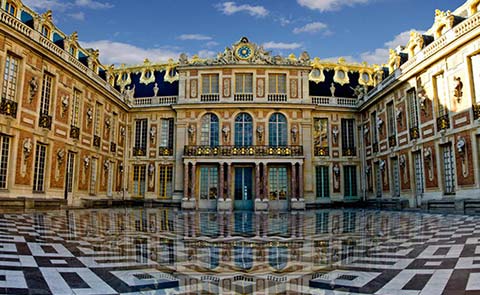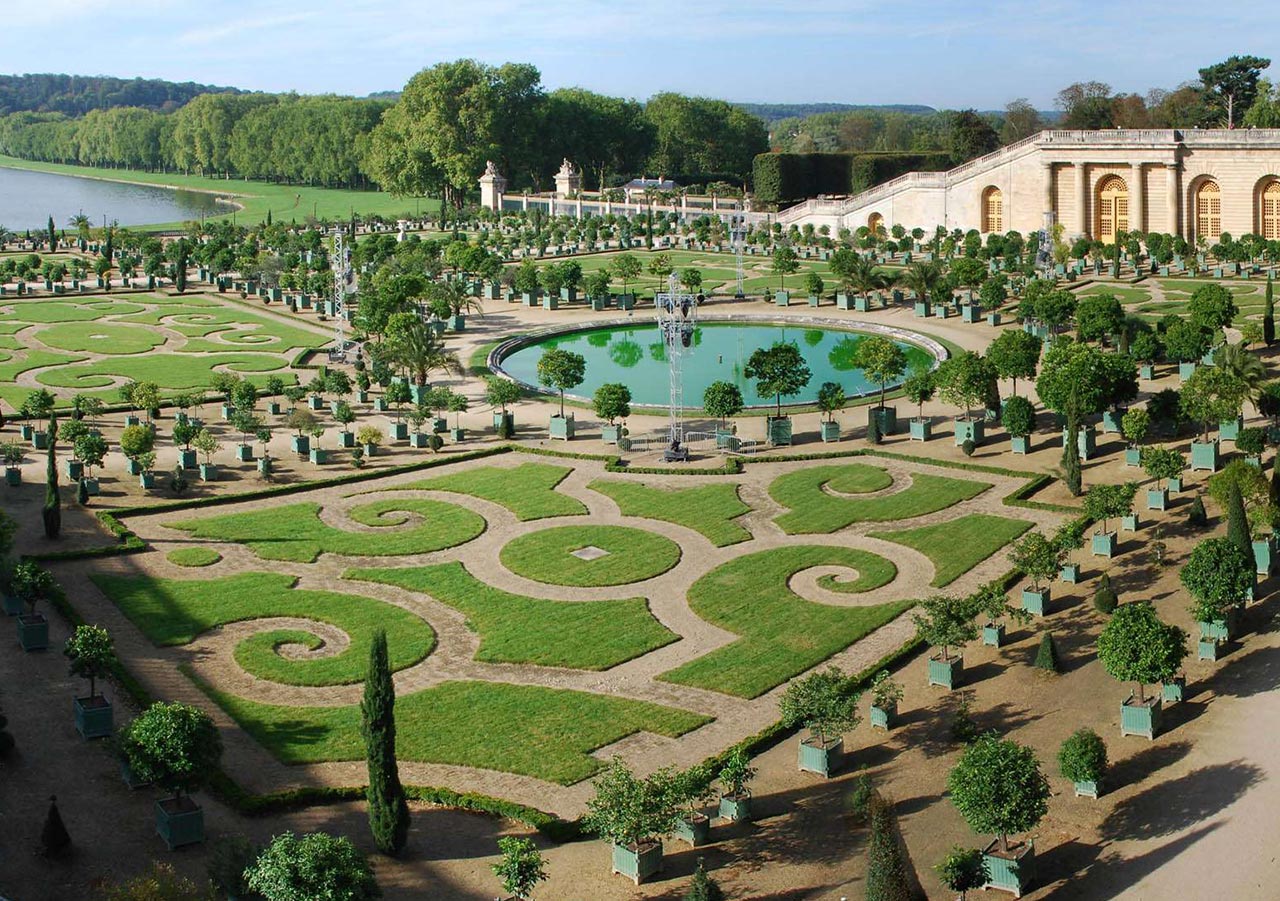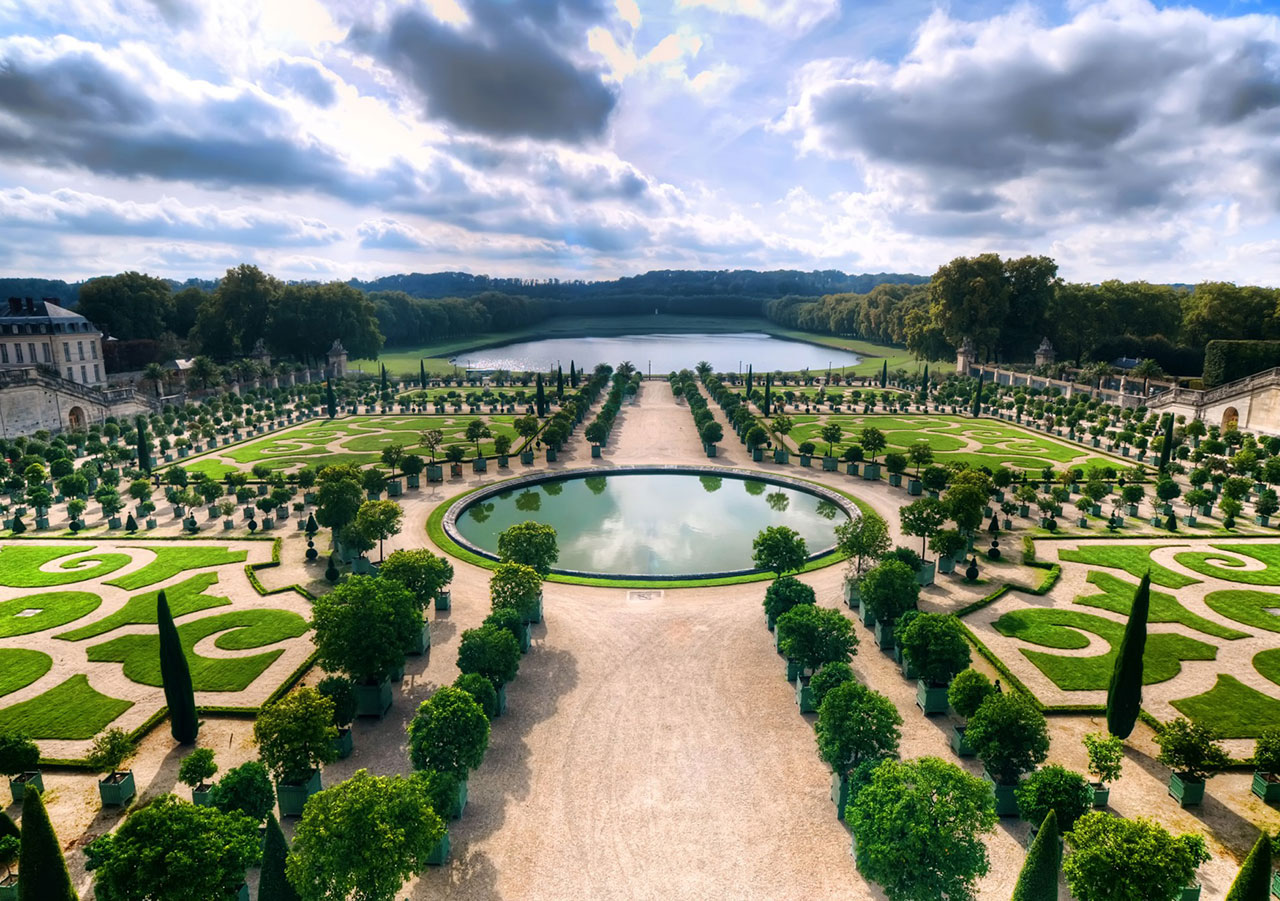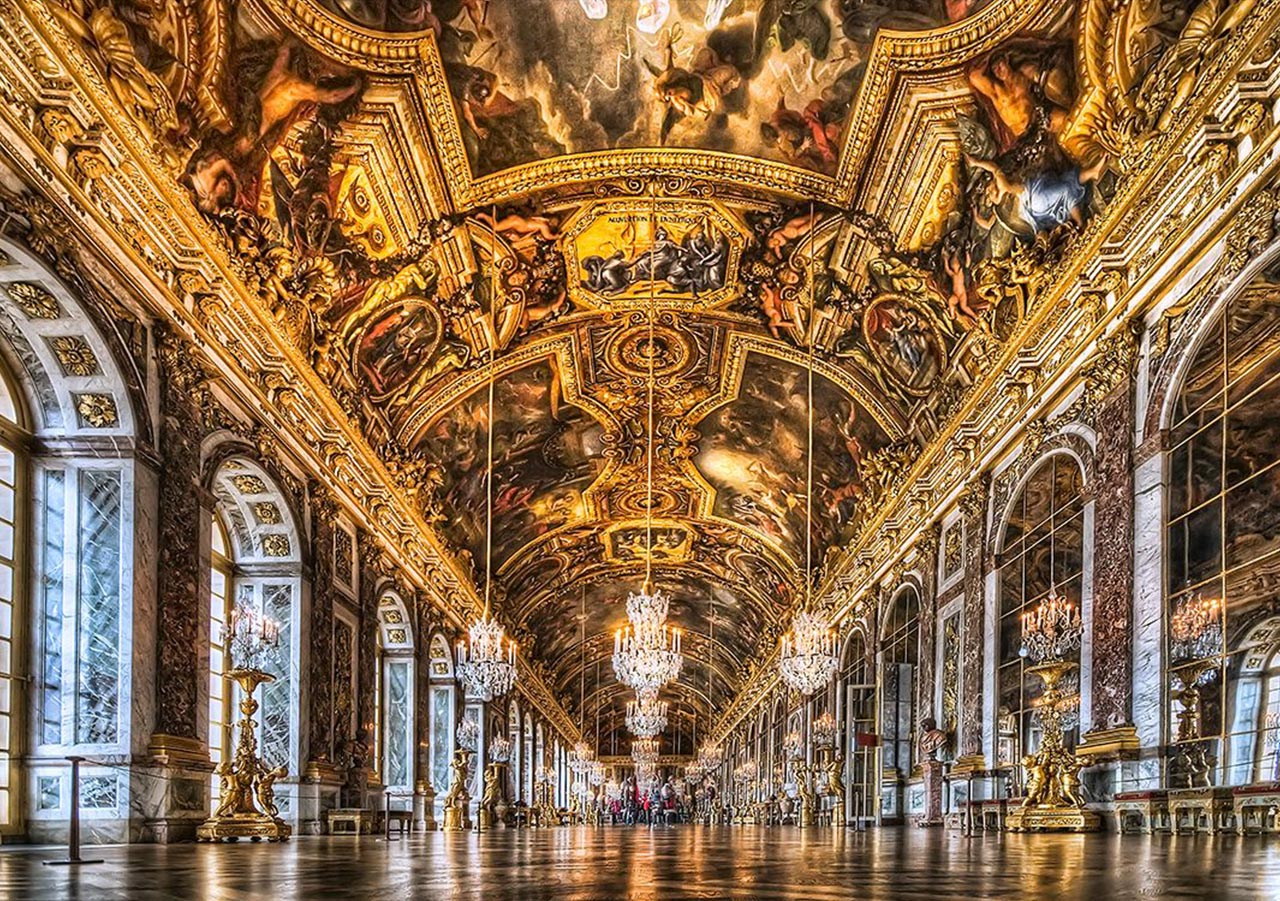Versailles is one of the most famous and largest French palaces. The palace is located in the small town of Versailles (20 km away from Paris).
The Palace and the Park of Versailles are an outstanding architectural ensemble, an architectural masterpiece that impresses everyone with its luxury and scale. It was constructed at the same location as the small palace of Louis XIII. By order of Louis XIV, in 1661 architects André Le Nôtre and Charles Le Brun began expanding and rebuilding the palace.
We are happy to offer you an excursion to Versailles. There, you can enjoy the spectacular residence of French kings.
The approximate time of the tour to the Palace of Versailles (excluding the park) is 3 hours, or (including the park) 4 hours.
The territory of the palace and the park ensemble is huge. The whole area, including the park, is more than 1 km². This tour to Versailles will submerge you into the centuries-old history of France.
The entire ensemble of Versailles is majestic. The magnificence of the decorated royal palaces, and the amazing beauty of the park, shaped by the court gardener Le Notre, make it non-pareil among all the palaces of the world. Later, it became the model that other kings used to construct their residences (like Drottningholm Palace).
Types of Versailles tours:
Palace of Versailles
The tour at the Palace of Versailles includes a visit to the Mirror Gallery, the large royal apartments, the apartments of the Crown Prince (weekends only), and temporary exhibitions.
The palace is closed on Mondays. April, 1 – October, 31 at 9:00-18:30; November, 1 – April, 31 at 9:00-17:30.
The Petit and Grand Trianon Palaces and Marie-Antoinette’s village
The name comes from the village of Trianon, founded by Louis XIV in 1668, with the intention to build a pavilion for lunches. The Grand Trianon palace is connected with the name of Louis XIV. This architectural composition is reminiscent of Versailles and uses similar elements.
The Petit Trianon Palace was the favourite place of residence of Marie-Antoinette. It was Louis XVI’s present to his wife.
One of the curious places in the garden of the Petit Trianon is the farm of Marie Antoinette that includes 12 houses. It includes a cheese factory, a farm, a mill, a fishing workshop, a dovecote and more. This village was like a toy for Marie Antoinette: everything had to be pretty, neat, clean, and beautiful. For example, maids who did the laundry in the creek had to sing or hum songs. Cows and pigs were washed daily, and then coloured ribbons were tied on them.
It is the best option to go to Versailles for the whole day in order to be able to enjoy all of its beauty. However, if you do not have that much free time, you can come for a couple of hours to see this piece of French architecture. Our guides will tell you the most important and relevant information, and show the little-known works of art. The excursion to Versailles will have a long-lasting impression on you, and you will dream of a new journey to Versailles.
Itinerary: the big royal apartments, the Hall of Mirrors (recently reopened after restoration) and the main apartments of Louis XIV’s wife, Queen Maria Theresa of Austria, walk in the gardens in the French style.
Giverny is a small village located 70 km away from Paris. It is mostly known due to the Manor of the French impressionist painter Claude Monet. Monet Manor includes Monet’s house where the artist spent 43 years, and a luxurious garden. The garden itself is a work of art created by the hand of the great maître, so consider visiting it.
Claude Monet moved to Giverny in 1883, and after a couple of years, he bought a house here, where he moved with his family.
Monet Manor received a status of the museum in 1996, when his son Michel Monet bequeathed it to the public. Monet house was in a virtually unchanged state. You will find the same interiors, furniture, pictures, and a collection of engravings. It is worth mentioning that a large number of bright colours is present in the interior of the artist, perfectly combined with each other.
As they say, brilliant people are brilliant at everything, and Monet was a genius not only in painting, but also in horticulture. The artist decided to create a garden which would vary depending on the time of year. He began constructing his “ideal” garden on a territory adjacent to the house, where he cut down an alley of cypress trees and created a tunnel of flowers and small beds of irises, gladioli, dahlias, chrysanthemums, phlox, and asters. Thus Monet showed his talent colorist by mixing different colours on the canvas of a green lawn.
The painter, while creating his perfect garden, also acquired the adjacent bog, connect it with the river, and it became an artificially created pond filled with water. Monet added a bridge in the Japanese style that is so often found in his paintings.
Monet’s Garden served as a model for him for many years. Initially, the artist used to go to open air, and later he stopped travelling, and all his later paintings were created in the garden. According to Claude Monet, a painting created on the open air is filled with vitality one cannot not possibly achieve while working in the studio. In the estate of Monet, you will not find the artist’s paintings: they are either in museums or in private collections, but a trip to Giverny will give you the opportunity to see “live models” (water lilies, flowers, plants, trees, bridge, stones, ponds) that inspired him to create world-famous landscape masterpieces. In the garden, Monet worked with five gardeners, one of whom was Japanese. It is the Japanese gardener who planted water lilies and nymphs that are so often found on the canvases by Claude Monet.
In the village of Giverny, the Museum of Impressionism is located, and the works of the American impressionists are stored there. American artists of the early XX century were so passionate about the works of Claude Monet that they came to work in Giverny. The museum also exhibits around 30 works of Monet himself.
The artist and his family were buried in the village of Giverny. His tomb is located in a small cemetery adjacent to the church of St. Radegund. Its construction started in the XI century, but was not completed until the XVI century.
Entrance tickets not included.








